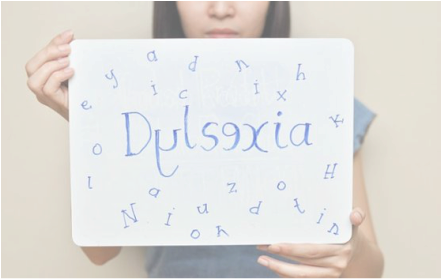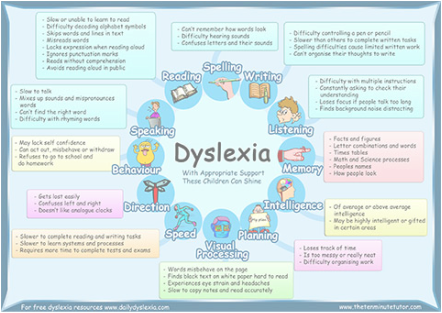Dyslexia
|
What is it like to be Dyslexic? Here is a video of the learning disability shown from a child's perspective
Symptoms of Dyslexia Include:
CLICK HERE FOR A LIST OF 37 SYMPTOMS OF DYSLEXIA |
Dyslexia is a neurological language-based learning disorder which interferes with the acquisition and processing of language. This learning disability is manifested by difficulties in receptive and expressive language, including phonological processing, in reading, writing, spelling, handwriting, and sometimes in arithmetic.
|
|
Dyslexia is far more common than we think. Here are of some famous celebrities and artists who have Dyslexia
Henry Winkler talks about what it is like living with Dyslexia
Henry Winkler, a spokesperson for Dyslexia, reads from his book Here's Hank: The Soggy Foggy Campout
|
Dyslexie Font Dyslexie Font is a typeface created by Christian Boer, a person who has Dyslexia, to make reading more accessible for his learning disability. The following are nine characteristics of this program that make reading more accessible for people with Dyslexia:
|
Christian Boer, the creator of Dyslexie Font, gives a TEDx talk about the program
So what does Dyslexie Font actually look like?
Jessica Collins explains Dyslexia, and presents new research on the learning disability
|
- The Gift of Dyslexia: Why Some of the Smartest People Can't Read and How They Can Learn (Revised and Expanded)By: Ronald D. Davis with Eldon M.Braun
- List of Books written using Dyslexie Font
- Games and Apps
- Online Resources and Posters-Dyslexia Daily
- Into the Book

